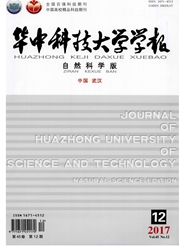

 中文摘要:
中文摘要:
研究红外热像的多步骤滤波去噪技术以及基于红外热像的含水煤岩单轴压缩损伤特征分析.对试验室尺度煤岩试样进行了浸水饱和、单轴加载试验与红外热成像探测.对在试验中得到的红外热像,首先利用中值滤波去除脉冲噪声;然后利用小波多分辨分析算法去除热像中的相干噪声.研究结果表明:红外图像温度分布的不同模式表征了不同的损伤阶段,即随机分布的小尺度高低温区代表压密阶段;大尺度集中高温区是破坏的早期信号;贯通性大尺度高温区是破坏的临界点;孤立大尺度低温区表示由微破裂汇合而成的塑性损伤,是损伤局部化的表征;贯通的大尺度低温区代表宏观破坏.浸水煤样有较大的原始损伤;在压密、弹性、微裂纹稳定扩展、非线性破坏等各个峰前阶段的损伤尺度与扩展速率大于不含水煤岩;在峰值后只有应变软化阶段,以突然失稳形式破坏.
 英文摘要:
英文摘要:
Development of multi-step filtering and denoising techniques on infrared (IR) image and thermography characterization of damage for the uniaxially loaded water-bearing coal rock specimens were presented. The laboratory-scale coal specimens were emerged in water saturated within different duration and then under uniaxial compression tests and infrared thermovision. The obtained raw ther- mographies were processed by using a 2D median filter for removing the pulsation noises. For removing coherent noises, a multi-resolution wavelet analysis algorithm was employed. The study illus- trates that the distribution patterns of infrared temperature (IRT) of the denoised infrared image represent the different phases of rock damage. Random-scattering distribution of small sized high or low IRT indicates the compaction phase; large-scale and localized high IRT is the precursory message for the upcoming failure; large-scale-high IRT across the specimen depicts the critical point; isolatedlarge-scale-low IRT indicates damage localization; large-scale-low IRT across the specimen indicates the macro-scale failure. The mechanical behavior of the water-bearing coal rock were featured with larger initial damage, faster-rate and larger-scale damage propagation during the pre-peak phase, only having the strain-softening stage during the post-peak phase, and failing with catastrophic manner.
 同期刊论文项目
同期刊论文项目
 同项目期刊论文
同项目期刊论文
 期刊信息
期刊信息
